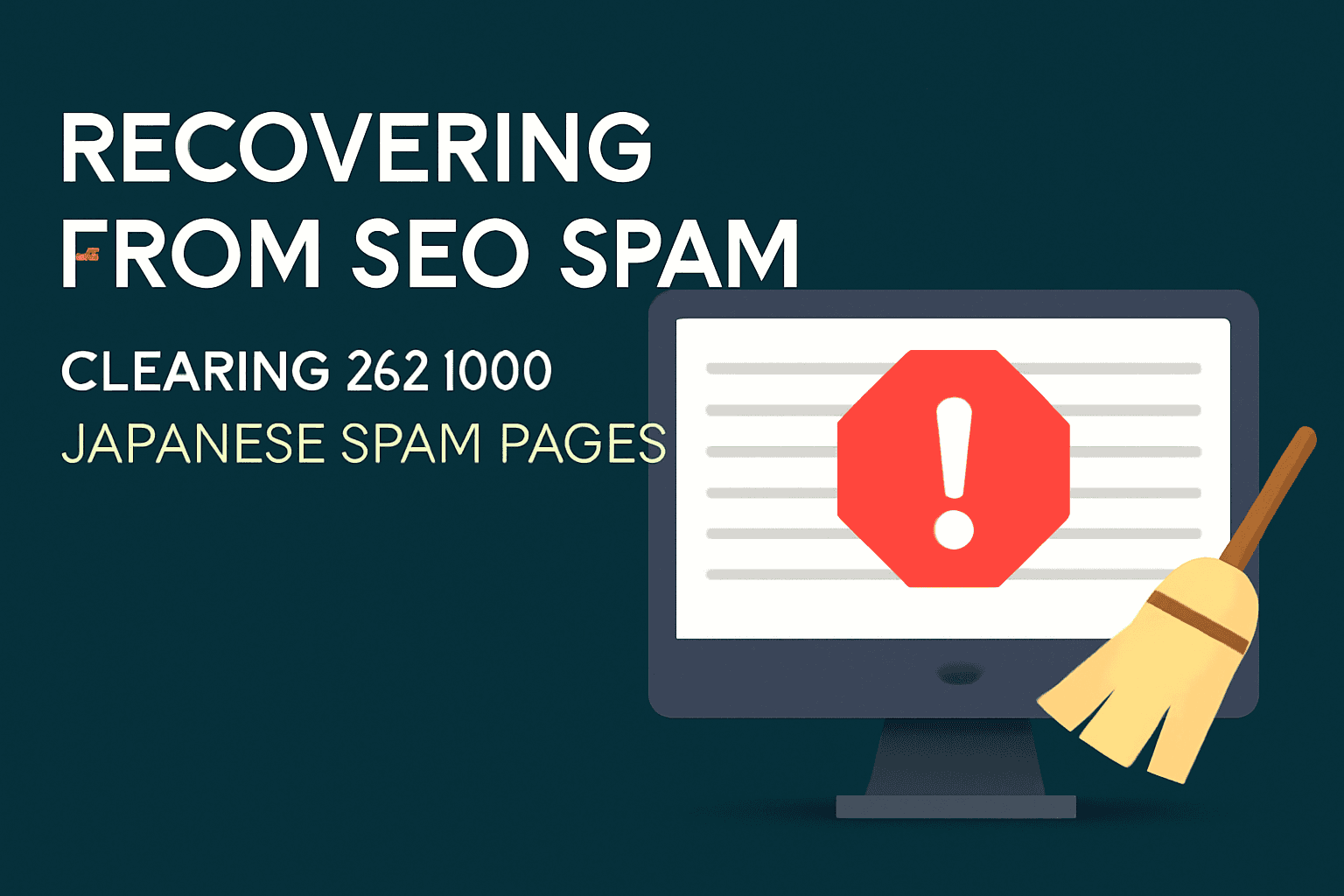Recovering from SEO Spam: How We Cleared 242,000 Japanese Spam Pages from a Hacked WordPress Site in 2025
In today’s digital landscape, hacked WordPress sites frequently fall victim to SEO spam, flooding Google with thousands of irrelevant pages that erode rankings and trust. As a specialist in remediating over 4,500 compromised sites, I recently tackled a severe case: a WordPress installation overrun with 242,000 Japanese spam pages indexed in Google Search results. These phantom pages, often linked to malware like backdoors or redirects, can devastate traffic and lead to blacklisting.

This comprehensive guide outlines our proven process: eradicating the malware, identifying spam URLs, purging them from Google’s index, and fortifying the site against reoccurrences. If you’re dealing with “WordPress SEO spam removal” or “deindex hacked pages 2025,” these steps—refined from tools like Wordfence and Google Search Console—will help restore your site efficiently.
Phase 1: Eradicating the Malware Infection
The first priority is neutralizing the threat to prevent further spam generation. Based on 2025 best practices from WordPress.org, here’s how we approached it.
1.1 Conduct Thorough Malware Scans
Deploy reliable plugins such as Wordfence (for real-time firewall and scans) or Sucuri’s SiteCheck for external audits to pinpoint malicious code. Manually inspect core files like index.php, .htaccess, and wp-config.php for anomalies, such as encoded scripts or unauthorized redirects often seen in Japanese spam hacks.
1.2 Audit and Secure User Accounts
Access the WordPress Dashboard > Users section to delete rogue admin profiles—common in breaches. Reset all passwords and enable 2FA for added protection.
1.3 Apply Updates Across the Board
Upgrade WordPress core, plugins, and themes to patch vulnerabilities, which account for most hacks in 2025. Eliminate inactive elements to reduce attack surfaces.
1.4 Revert Modified Core Files
Compare .htaccess and wp-config.php against clean versions from a backup or fresh install, restoring them to eliminate hidden exploits.
Phase 2: Identifying and Extracting Spam URLs
With the site clean, compile a list of indexed spam pages for targeted removal. We combined manual searches with API tools for efficiency.
2.1 Leveraging Browser Extensions for Initial Extraction
Query “site:yourdomain.com” in Google to reveal indexed content. Use extensions like Infy Scroll to load results fully, then URL Extractor to grab links. Filter spam with this Python script (requires pandas):
import pandas as pd
csv_file = "urls.csv"
df = pd.read_csv(csv_file)
site_url = "https://domain.com"
filtered_urls = df[df['URL'].str.startswith(site_url)]
filtered_urls.to_csv("filtered_urls.csv", index=False)
print("Filtered URLs saved successfully!")2.2 Harnessing the Google Search Analytics API for Bulk Data
For massive volumes, the API pulls up to 25,000 rows of pages and queries.
2.2.1 Access the API Interface
Visit the Google Search Analytics API and select “Try it now.”
2.2.2 Switch to Full-Screen View
Click the full-screen icon for easier navigation.

2.2.3 Configure the Query
Input your site URL in siteUrl. Paste this JSON in the Request Body:
{
"startDate": "2023-01-01",
"endDate": "2025-02-19",
"dimensions": ["QUERY", "PAGE"],
"rowLimit": 25000
}
2.2.4 Authenticate and Run
Enable OAuth 2.0 and execute for a 200 OK response.
2.2.5 Export to CSV
Copy the JSON, paste into Konklone’s JSON to CSV tool, and download.
2.3 Utilizing Google Search Console’s Pages Report
In GSC, go to Indexing > Pages, then “View data about indexed pages” and export the list.

Phase 3: Deindexing Spam from Google
With URLs in hand, prompt Google to remove them via console tools.
3.1 Submit a Pruned Sitemap
Generate a sitemap.xml with only legitimate pages and upload it in GSC’s Sitemaps section to signal clean content.
3.2 Execute Bulk Removals
Employ the Google Console Bulk URL Remover extension to process spam URLs en masse.

3.3 Rely on 404 Deindexing
Post-cleanup, spam pages return 404s, prompting Google to drop them naturally over time.
Phase 4: Bolstering Site Defenses for 2025 Threats
Prevention is key—implement these layers to deter future breaches:
- Wordfence: For robust firewall and scans.
- All-in-One WP Security & Firewall: Comprehensive hardening.
- WP Armour Honeypot: Anti-spam for forms.
- Cloudflare: Traffic filtering at the edge.
- 2FA Plugins: Mandatory for logins.
Outcomes: A Successful Recovery
- ✅ Eliminated 242,000 spam pages from Google.
- ✅ Exported 25,000 URLs for detailed review.
- ✅ Completely purged malware.
- ✅ Strengthened overall security.
- ✅ Resolved in under 10 hours.
Essential Lessons from This Cleanup
- Act Swiftly: Quick response limits damage.
- Embrace Automation: Scripts and tools handle scale.
- Overcome API Limits: Use dimensions for expanded exports.
- Maintain Vigilance: Ongoing updates and scans are vital.
Dealing with SEO spam or a hacked site? I offer expert WordPress malware removal and security audits. Contact me for a free scan—let’s safeguard your online presence. Share your spam horror stories below!
